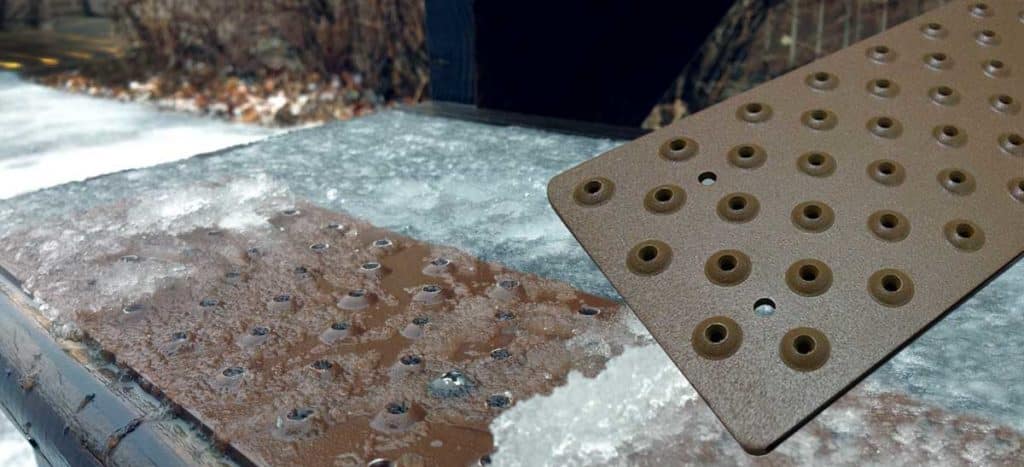
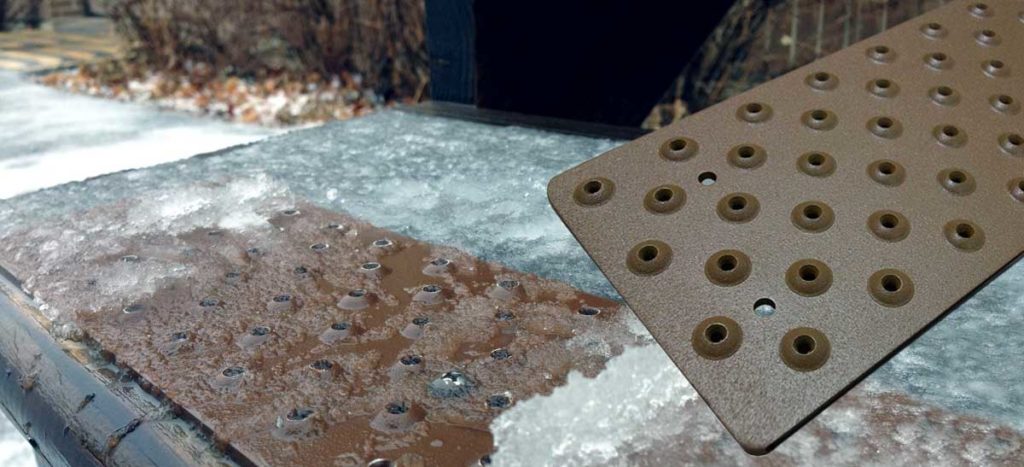
When the first cold winds of winter start to whirl, those of us living in the north half of the US know that low temperatures and snowfall are on their way. The beauty of freshly fallen snow brings a sense of wonder and new possibilities for the winter season, yet dangers can lurk beneath. Moisture in the form of dew, rain, sleet, or snow paired with freezing temperatures creates a recipe for dangerous slips and falls. If you have outdoor stairs leading up to your deck or porch, sheets of ice can form on the stair treads, making them incredibly slippery and hazardous to walk on. In fact, falls are actually the #1 leading cause of emergency room visits in the United States.
Whether you’re in a rush to get to work in the morning or taking the dog out at night, one slip on icy stairs may cause a fall that results in an expensive trip to the ER. To prevent these potentially life-threatening injuries, it is critical to fix the icy steps at your home. There are multiple actions you can take to prevent this ice buildup, which we will explore later, but first, it is important to understand how ice forms on outdoor steps.
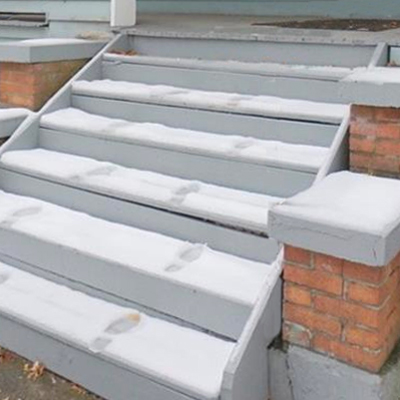
The formation of ice on outdoor surfaces is unavoidable in most situations. If the stairs are not covered by some sort of roof structure, they will inevitably become covered in snow. Fluctuating temperatures will cause the snow to melt and then re-freeze, creating ice. Black ice, a thin, almost invisible coating of ice, can also form on your outdoor steps in this way. Black ice is especially dangerous because it is not as noticeable as other ice. While you may think that the steps are clear and stride down them without hesitation, a thin layer of black ice can send you slipping.
In other circumstances, ice can form as a result of dripping water. Depending on the placement of your home’s gutters, rainwater or melted snow may be dripping down from your roof and onto your stairs. If the downspout is not properly aimed away from the house, that can also send a stream of water onto your steps. Once the temperatures drop, this water will freeze into ice.
There are multiple ways to address ice formation on your outdoor steps. They are as follows:
Not one remedy is the fit-all solution for icy steps, and multiple measures should be used for the safest and most comprehensive slip and fall prevention. Below, we will explore each prevention method and how they should be employed to best protect you and your family from slipping and falling on icy stairs.
As mentioned above, dripping water from the roof or gutters can cause sheets of ice to form on your outdoor stairs. Making sure that the water is routed away from your steps is key to making sure freezing temperatures will not turn it into sheets of ice. It is also a good idea to ensure that your gutters are free of clogs and leaks so that the water is properly routed and not overflowing from the side.

Snow should be cleared from outdoor stairs as soon as possible. If the snow is cleared shortly after it has fallen, there is less chance of it freezing into sheets of ice following temperature fluctuations. This also includes sleet and slush created from snow and rain mixing together. If sheets of ice have already formed on your stairs, you can use a metal snow shovel to begin breaking up the ice and shoveling it away. Be sure to have solid contact with the ground when doing this. While this can help remove large chunks of ice if you’re able to break them up, a show shovel will likely not be able to remove the ice in its entirety.
In addition, there are a few general prevention measures that should be used to prevent slips and falls on icy stairs. Firstly, it is vital that all outdoor stairs have handrails. Using handrails provides more stability and reduces the chance of a fall because they add another point of contact for you when walking down the stairs. If your outdoor stairs do not have handrails, install them sooner than later. Secondly, walk carefully on stairs of any kind. As mentioned prior, always use handrails when walking up and down stairs. Walk at a leisurely pace, as running or skipping steps increases the risk of falling. If there is visible ice or debris on the stairs, be extra vigilant to take solid steps. Also, be sure to wear proper footwear that has some sort of traction on the sole like winter boots or running shoes. While they may be convenient to put on when retrieving the paper in the morning, slippers are not secured to your foot and provide minimal traction, potentially causing a slip on icy stair treads.
Because icy surfaces do not provide traction, it is very easy to slip on them. One way to create traction in icy areas is to scatter something that can adhere to your shoe. Sand is commonly used for this purpose because it is widely available and affordable. Cat owners have also used some kitty litter to create traction in icy areas. A third option is granules specifically formulated to provide traction like ecoTraction.
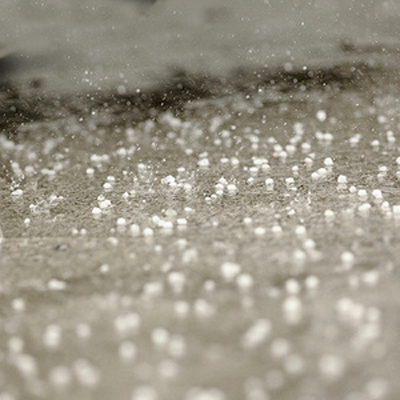
While these solutions are able to make it safer to walk on ice, they are not able to melt the ice itself. As foot traffic scatters the sand or granules further, traction is decreased. Once the ice and snow melt, the sand, granules, or kitty litter will remain, meaning some cleanup efforts will be in order. One of the benefits of using sand or traction minerals like ecoTraction is that they are non-corrosive so they are safe for use on wood and concrete as well as for the environment.
Pouring hot water on ice seems like a sensible way to melt it because of the hot temperature. However, this will only cause more ice to form once the hot water freezes. The only way to melt the ice on your outdoor steps is to use salt/ice melts. Ice-melting salt is economical in price and easy to find. In fact, table salt will work to melt ice, but it is much easier to purchase a bag of ice melt for this purpose. Virtually every hardware or big box store carries a selection of ice-melting salts, so they shouldn’t be difficult to find.
In short, salt melts ice because it lowers the freezing point of water. This also prevents the water from re-freezing. While they are similar, the main active ingredient in de-icing salts can affect how the ice melts. For example. Sodium chloride will be able to help melt ice that is 15-32°F, magnesium chloride can melt ice from 5°F, and calcium chloride from -20°F. While all types of ice-melting salts are effective, you may want to take into consideration the active ingredient in the ice melt as well as the temperatures of your climate when deciding what to purchase.
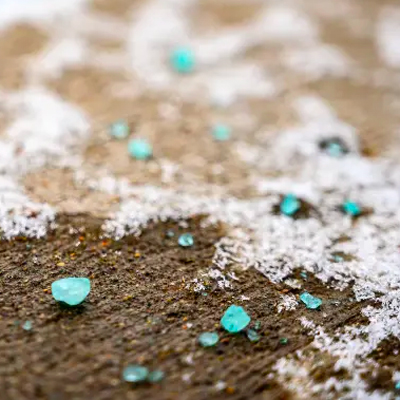
In addition to melting the ice, another benefit of the salt is that it also provides some traction when walked on. Some drawbacks, however, is that salt is corrosive and can be harmful to animals or the environment. It can damage both wood and concrete steps. While this corrosive will likely not affect the structural integrity of the steps, it can affect the appearance. It can cause slight chipping and indentations. As the salt is swept away by rain, if it accumulates in larger amounts, it can cause harm to vegetation and any animals that ingest it. Besides wild animals, your pets may be affected by the salt as it could cause slight burning on their paws. In that case, alternatives like Safe Paw claim to melt ice and provide traction without harming animals or the environment.
The last and perhaps most efficient way to fix icy steps is to install non-slip stair treads. They prevent slips and falls on stairs by providing a high-traction surface that creates stable contact with your shoe. But with a variety of options on the market, which one is most effective? For starters, non-slip grit tape and treads can be found at most hardware or big box stores. The peel-and-stick tape and treads are easy to install, but unfortunately, the benefits end there. Once the grit surface is covered by snow or ice, it is rendered useless. In addition, using a snow shovel will peel up the treads when you attempt to clear them from snow. Non-slip rubber treads have a similar fate, as they are not able to provide any traction when covered by snow or ice and can be easily damaged by snow shovels.
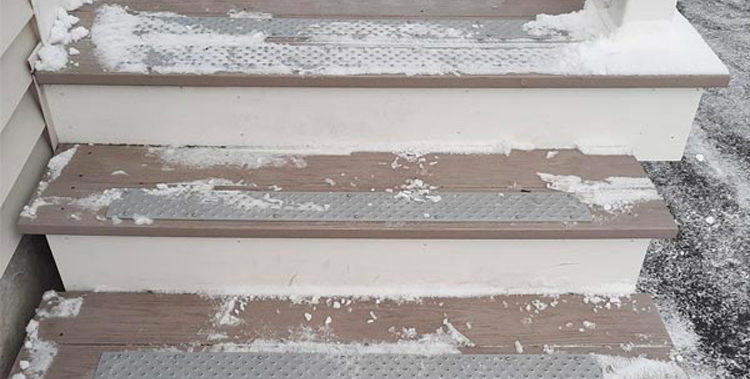
One of the drawbacks to the remedies mentioned above like traction granules, ice melts, and other non-slip stair tread options is that they are temporary. You will continually have to reapply the salt or granules, and will likely need to clean them up once the weather warms up. Plus, the corrosive effects of salt can damage the wood, concrete, and/or landscaping at your home. Other non-slip stair tread options are not fit for use in winter, and will likely not even survive the cold season. Luckily, HandiTreads Non-Slip Aluminum Stair Treads are your permanent solution to icy steps at your home. Once they’re installed, HandiTreads do not require any further maintenance or replacement. Plus, they’re guaranteed to last a lifetime in your home.
Since HandiTreads are constructed of hard-wearing aluminum, you might be thinking, “well, wouldn’t cold metal be slippery too?” While metal can be slippery, HandiTreads have a unique surface with patented raised traction buttons. When stepped on, the buttons dispel up to an inch of water, snow, or ice. The treads are also powder-coated with an electrically-bonded colored epoxy tint that has embedded polyester grit. This gives the treads an extra non-slip texture that feels much like 80-grit sandpaper. We go into more detail about why metal HandiTreads are not slippery in this blog.
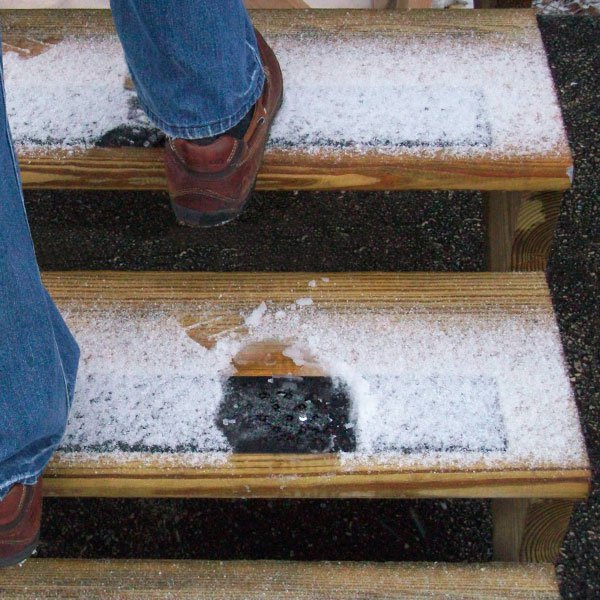
The patented raised traction buttons of the HandiTreads also make it harder for ice to form on top of the treads, as water is allowed to pass through the buttons. With each step, any forming ice will be broken up and you will have a stable grip on the tread with your shoe. In some situations, however, heavy snowfall can cause thick ice formation. That is why it is still important to clear snowfall from the treads and use ice-melting salts or other tactics mentioned above when applicable. Unlike other non-slip stair treads, HandiTreads will not be damaged by snow shovels.
Also unlike other non-slip solutions, HandiTreads are applied with included color-matched screws, not adhesive. This means that there is no surface preparation required beyond a simple sweep to make sure the area is clear of debris, and HandiTreads can be installed in any temperature or weather condition. Although slip and fall prevention should be addressed as soon as possible, it is never too late in the season to install non-slip HandiTreads.
HandiTreads are 3.75” wide and available in three lengths (30”, 36”, or 48”) in order to fit a wide variety of residential stairs. The four designer shade options, Chestnut Brown, Java Brown, New England Gray, and Obsidian Black, were selected after much research to determine which shades would match or complement the most popular outdoor stair colors. Because HandiTreads prevent falls and look good doing it, they’re the perfect non-slip solution for homeowners who value both safety and home design.
With the arrival of the colder season, the most important reminder is to prevent dangerous slips and falls before they happen. That is why it is essential to employ slip and fall prevention measures to keep you and your family safe. HandiTreads are designed to be your permanent, comprehensive non-slip solution. Stay safe this winter season with HandiTreads!